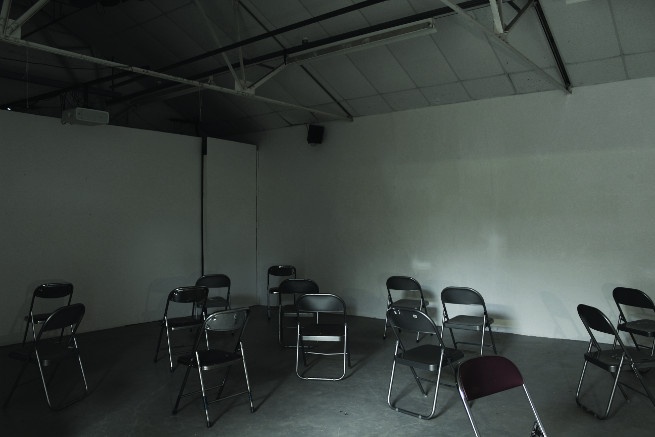
Melanie Eckersley
b. 1992, Bogotá, Colombia
2012-2015 BFA, The Ruskin School of Art, University of Oxford, Oxford
Recent exhibitions
Solo Shows:
2015 ‘LauranDaniel’, Dolphin Gallery, Oxford
2014 ‘George & Judy’, Ruskin School of Art, Oxford
2013 ‘Going Further with the Option Key’, Dolphin Gallery, Oxford
Group shows:
2015 ‘NOW LMH NOW’, Lady Margaret Hall, Oxford
2014 ‘Anywhere and Not at All’, Lady Margaret Hall, Oxford
2014 Oxford University Press Pirye Prize Installation, High Street, Oxford
Awards and Residencies:
2014 Winner of Slingsby Prize for Funnel Vision, Slingsby, London
Artist’s Statement
I work with language, which I then embed in (or use to describe the structure of) videos/ sound pieces/ installations/ websites.
I am somewhat inspired by zoos, children’s books and psychology experiments. My work contains self-written stories that err between fantasy/reality and gobbledygook/scientific theory. I believe one role of the contemporary artist is to purposely keep the incongruity found in art partially unresolved.
Art should be incongruity resolved. See Fig. 1.
Consequently, my work often makes linguistic, logical or structural sense without making contextual sense. See Fig. 2.
My piece, “George & Judy” is a sound piece/experiment based loosely on the psychological Theory of Mind (ToM): the ability to attribute mental states to oneself and others and to understand that others have beliefs, desires, intentions and perspectives that are different from one’s own. ToM is an indication of our social intelligence as a species; many of our activities in daily life are only possible as a result of co-operation on an immense scale.
One measure of ToM is intentionality. Reflecting on one’s own desires is called first-order intentionality. Second-order intentionality involves forming a belief about someone else’s desires. See Fig. 3.
Non-human primates are (according to recent evidence) not able to think beyond this order, while humans are said to be capable of sixth-order intentionality. However, the fact that we are ‘capable’ of understanding higher-order ToM sentences does not mean we make an effort to; it requires a high level of concentration that contemporary society, frankly, does not encourage (at least outside of literature). “George & Judy” tests whether this hypothesis is True or False.
Figure 1. Incongruity-Resolution:
(communication): a form of communication that uses logic and descriptive rules of grammar to intentionally create incomprehension.
(humour): a form of humour that involves a degree of incongruity that makes linguistic sense but not contextual sense.
*my own definitions.
Figure 2. Context as Sin:
Context leads to classification.
Classification homogenises detail.
Detail is important.
Details are beautiful.
Figure 3. Order of Intentionality (Exemplified)
1st – I want to kiss you.
2nd– I think you want to kiss me.



